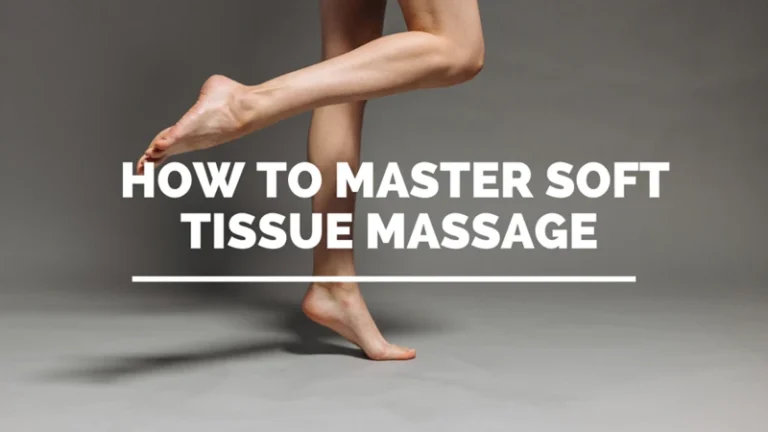If you’re looking for a simple way to massage your calf muscle yourself, then this step-by-step guide is for you. We’ll cover how to massage your calf muscle in the comfort of your own home, using easy-to-follow instructions. We’ll show you how to target the right muscles, how to use the right pressure, and how to keep your massage safe and effective. With this guide, you’ll be able to enjoy the many benefits of massage without having to visit a professional.
Contents
Benefits of Massaging Your Calf Muscle
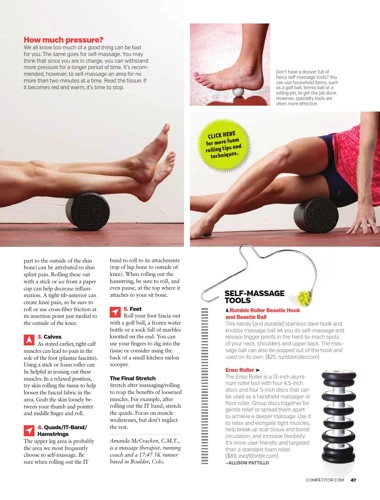
Massaging your calf muscle can help to reduce tightness in the calf muscles and improve overall flexibility. It can also help to reduce pain and improve circulation, which can help you to recover faster from exercise and prevent injury. Massaging your calf muscle can also help to reduce the risk of developing conditions such as shin splints and Achilles tendinitis. Additionally, it can provide relief from chronic calf pain, which can be caused by a variety of conditions such as plantar fasciitis, overuse injuries, or arthritis. Massaging your calf muscle regularly can also help to improve your posture and reduce fatigue. It can also help to reduce tension in the calves and improve your balance and stability. Finally, a regular massage can help to improve your range of motion, which can help to improve your performance in activities such as running, jumping, and climbing. How to release tight calves massage is a great way to get the most out of your massage and reap the full benefits.
Pre-Massage Preparation
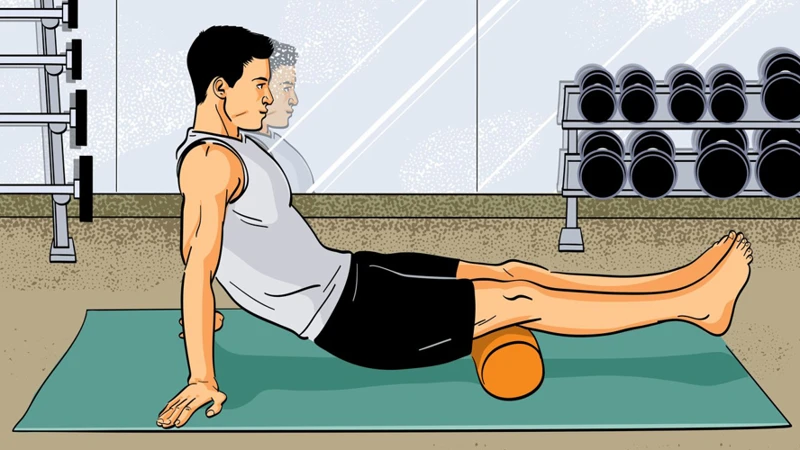
1. Warm up your calf muscles
- Start with a light cardiovascular activity such as walking, jogging, or cycling for 10 minutes to get your calf muscles warm.
- You can also do some calf stretches to help loosen up the muscles.
2. Choose a massage oil or lotion
- Massage oil or lotion helps to reduce friction and provide a smooth massage.
- Choose a product that is specifically formulated for massage.
3. Gather your supplies
- You will need a comfortable chair or mat and a pillow for support.
- You will also need a massage tool such as a massage ball, foam roller, or massage stick.
4. Set the mood
- Set the mood by playing soothing music and lighting some candles.
- Make sure the room is warm and comfortable.
5. Get into position
- Sit on the chair or mat and place the pillow behind your calf.
- Make sure your back is straight and your feet are flat on the floor.
Positioning for a Self-Massage
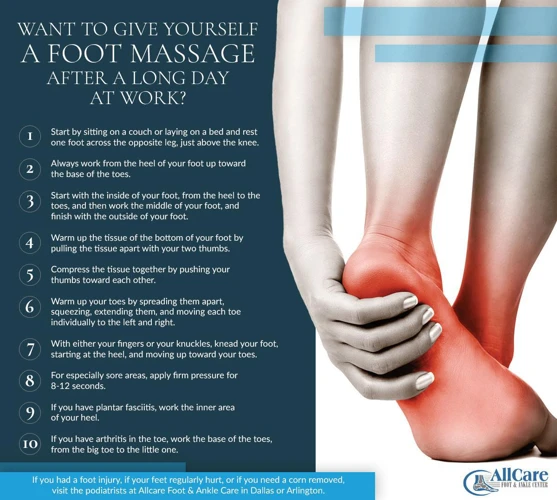
For a self-massage of your calf muscle, it is important to be in a comfortable position. Sitting on a chair with feet flat on the floor or lying on your back with your feet elevated on a cushion or stool are both suitable. It is important to ensure your lower back is supported, whichever position you choose.
To begin, place one hand on the muscle and apply a gentle pressure. Use the other hand to lightly stroke the muscle from the ankle up towards the knee. You can use your thumb or the heel of your hand to massage the calf muscle in a circular motion, or use your fingers to apply a pinching motion. Increase the pressure to a level that is comfortable, but not painful. Spend a few minutes on each calf muscle, then switch to the other leg.
The table below outlines the different techniques you can use to massage your calf muscle yourself:
| Technique | Description |
|---|---|
| Gentle stroking | Lightly stroke the muscle from the ankle up towards the knee |
| Circular motion | Use your thumb or the heel of your hand to massage the calf muscle in a circular motion |
| Pinching motion | Use your fingers to apply a pinching motion |
When you have finished massaging, gently stretch the calf muscle by reaching your toes towards your shin. This will help relax the muscle after the massage.
Doing a self-massage on your calf muscle regularly will help to loosen tightness, reduce stiffness and improve circulation. However, if your calf muscle is extremely painful or swollen, or if the pain persists, it is important to see a doctor or physiotherapist for advice and treatment.
Techniques for Massaging Your Calf Muscle
- Finger Walking – Start at the back of your calf and use your fingers to walk up to the top of your calf. Do this in a circular motion, applying pressure as you go.
- Effleurage – Using your hands, make long, gliding strokes from your ankle to your knee.
- Petrissage – Using your thumbs, knead the muscle in a circular motion.
- Friction – Apply firm pressure and make small circles with your thumbs.
- Tapotement – Using your cupped hand or the side of your hand, lightly tap the muscle.
- Vibration – Place your hand on the muscle and shake it gently.
Massage Sequence
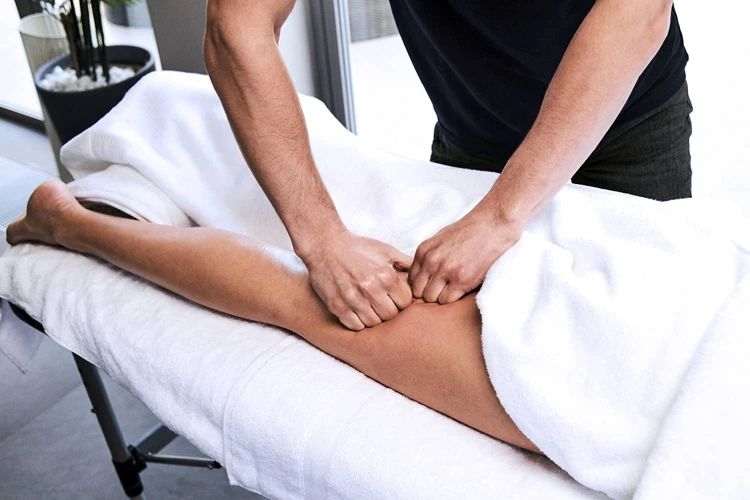
- Position yourself: Sit comfortably with your legs bent and feet on the floor. Place one hand on top of your calf muscle and the other on the bottom.
- Knead: Using both hands, knead the muscle in a circular motion, applying pressure as needed. Move up and down your calf.
- Friction: Use your fingertips to create friction on the muscle, pressing and rubbing at the same time.
- Stroke: Use long, gentle strokes to soothe and relax the muscle.
- Stretch: Gently stretch the muscle by pulling on it and then releasing.
- Repeat: Repeat the sequence as needed.
Duration
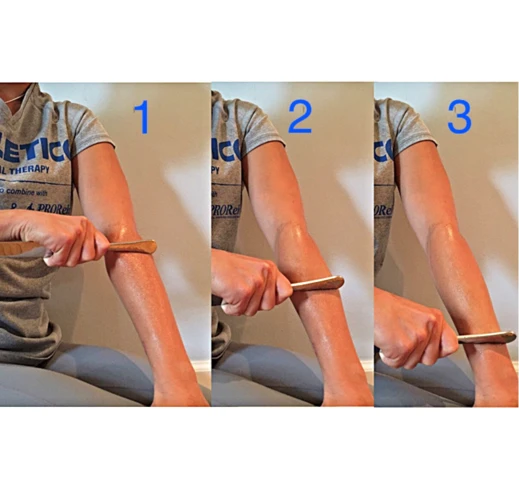
Important: Massaging your calf should not take more than 10 minutes on each leg.
- A calf massage should be done for a maximum of 10 minutes on each calf muscle.
- It is important to stop the massage if you experience any pain or discomfort.
- You may want to wait to cool down after a workout if you plan on massaging your calves.
- After a massage, the muscles should feel relaxed and any tension should be relieved.
- When you are massaging your calf, you should feel a slight discomfort or pressure, but not pain.
- It is important to never apply too much pressure when massaging your calf.
Post-Massage Considerations
After massaging your calf muscle, it is important to take some time to rest and allow the muscle to recover. Drink plenty of water to help flush out the toxins that have been released. If you experience any soreness or discomfort, use a cold compress to help reduce swelling and pain. For longer-term effects, consider taking an Epsom salt bath or using a foam roller to help maintain muscle flexibility. Finally, stretch the calf muscle for 10-30 seconds to help keep the muscles loose and relaxed.
Frequently Asked Questions
What type of oil should I use for a self-massage of the calf muscle?
For self-massage of the calf muscle, it is recommended to use a natural oil such as olive, coconut, sesame or almond oil. These oils provide a smooth and slippery surface, allowing for an effective massage. Additionally, they also help nourish and moisturize the skin, leaving it feeling hydrated and soft.
How Often Should I Massage My Calf Muscle?
Regular Massage: Massaging your calf muscles regularly is essential to keep them healthy and elastic. You should massage your calves at least once a week.
Frequency: Depending on your level of activity, you may need to massage your calves more frequently. If you are an athlete or have a physically demanding job, it may be beneficial to massage your calves every other day.
Intensity: The intensity of the massage should depend on your body’s needs. Start with a light massage and gradually increase the pressure as needed.
Duration: The length of each massage session should last between 5-15 minutes. You should feel a mild stretching sensation as you massage your calves, but not pain. If you experience any discomfort, reduce the pressure and duration of the massage.
Are there any specific techniques I should use when massaging my calf muscle?
Yes. Here are some techniques you can use when massaging your calf muscle:
- Effleurage: Use your hands to slowly stroke the calf muscle in long, smooth, and gentle motions.
- Friction: Apply pressure with your thumb or fingers while moving in a circular motion to target deeper, knotted muscles.
- Petrissage: Use your fingers and thumb to knead or squeeze the calf muscle.
- Tapotement: Use rapid, light tapping motions with the palms of your hands or fingertips.
- Vibration: Use your hands to apply a quick, steady vibration to the muscle.
Are There Any Specific Areas I Should Focus On When Massaging My Calf Muscle?
Yes, there are a few specific areas to focus on when massaging your calf muscle:
- The Achilles tendon – The Achilles tendon is the band of tissue that connects the calf muscle to the heel bone. Massaging this area can help reduce tension and improve flexibility.
- The Gastrocnemius muscle – This is the main muscle in the calf, and it can become tight and sore from activities such as running or jumping. Massaging this area can help reduce pain and improve circulation.
- The Soleus muscle – This is a smaller muscle located beneath the Gastrocnemius, and it can also become tight and sore. Massaging this area can help reduce tension and improve mobility.
- The Peroneal muscles – These are two muscles located on the outside of the calf, and they can become tight and sore from activities such as running or walking. Massaging this area can help reduce pain and improve circulation.
It is important to pay attention to all areas of your calf when massaging, but focusing on these specific areas can help improve the effectiveness of your massage.
Are there any precautions I should take when giving myself a self-massage of the calf muscle?
When giving yourself a self-massage of the calf muscle, it is important to be mindful of the pressure you are applying. Avoid putting too much pressure on the muscle, as this can cause bruising or injury. Additionally, use slow, gentle strokes and be sure to stop if you experience any pain or discomfort. It may also be helpful to use a massage oil or lotion to help reduce friction and make it easier to massage the muscle.
Conclusion
Massaging your calf muscles yourself is a quick, easy, and relaxing way to improve your circulation and reduce pain and tension. With the simple steps outlined in this article, you can give yourself a massage in a few minutes and enjoy the benefits for hours. And, remember, your calf muscles are just one of the many areas of your body that you can massage yourself.

